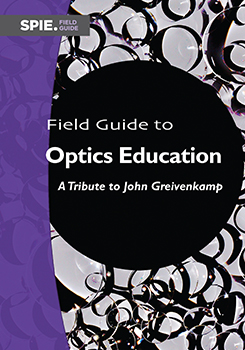Could Our Eye Be a Single Sphere?
Yobani Mejía
Universidad Nacional de Colombia, Colombia
John Greivenkamp with an antique telescope (photo credit: Wyant College of Optical Sciences, University of Arizona).
When I teach the Gaussian formula for a single spherical surface, n′/s′ − n/s = (n′ − n)/R, I like to mention two examples: the human eye and the refractive sphere.
In a first approximation, within the paraxial region, a reduced schematic eye estimates the image in the retina. It is composed of two parts: the rear part is a spherical surface of radius R0, and the frontal part is also a spherical surface of radius rc < R0, as shown in the figure below. The medium bounded by these surfaces has an equivalent refractive index neq ≈ 4/3.1 With regard to the shape of this eye model, I ask students whether it is possible to have an eye as a single sphere.
Reduced schematic human eye.
Then, after some discussion, I pose the problem of the refraction of light at a glass sphere of radius R0 and index 3/2 when it is immersed in air with index 1.0. First, I ask the students to sketch the refracting rays coming from the infinite. Some of them draw the point where the rays converge inside the sphere, and others draw it outside the sphere, but no one draws it in the second vertex. From the Gaussian formula, at each surface, it is found that the point at which all the rays converge is outside (at R0/2) the second vertex, as shown in the figure below.
Refraction of a parallel beam at a sphere.
Finally, I ask them what we need to change in the schematic eye to have an eye like a single sphere, in order for a parallel incident beam to converge at the second vertex. The solution implies a change in the refractive index n′. From the Gaussian formula, with s = −∞, and s′ = 2R0, the answer is n′ = 2.
When I talk about this with eye specialists (optometrists, ophthalmologists), they are surprised, and tell me that they had never thought about it. In some way, the human eye must have the current shape because, in our bodies, the refractive index of fluids like the aqueous humor and vitreous humor are close to that of water.
This simple exercise allows students to understand that the general geometry of the human eye can be explained with the Gaussian formula.





